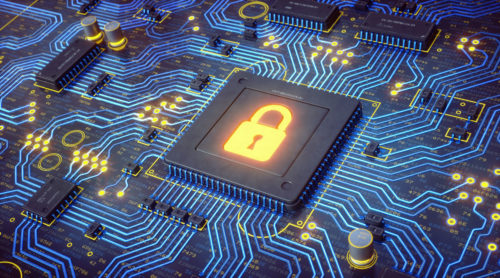
The Energy Sector Needs to Stop Seeing Blockchain as a Disruption
The Energy Web Foundation (EWF) was cocreated by Rocky Mountain Institute and Grid Singularity. Representatives of both organizations serve on EWF’s Foundation Council.
Across both sides of the blockchain aisle—both industries contemplating the technology’s implications and evangelists advocating its adoption—people often describe blockchain as the next big disruptor. Skeptics tend to see such claims of blockchain-based disruption as overblown, while the pro-blockchain community tends to see it ushering in nothing short of a decentralized revolution.
But they all use that word: disruptor.
Media headlines heralding the arrival of disruption at the hands of blockchain technology are nearly inescapable, including throughout the energy sector:
- Compelo: “Is Energy Trading Next Up for Blockchain Disruption?”
- Power Technology: “Will Blockchain Disrupt the Traditional Distribution Network Model?”
- Electronics 360: “How Can Blockchain Disrupt the Energy Industry?”
- Choose Energy: “How Blockchain is Disrupting the Energy Market”
- Lexology: “Can Blockchain Technology Disrupt Renewable Energy Finance?”
- Antenna Group: “How Blockchain is Disrupting the Energy Industry”
- Capdax via Medium: “How Blockchain Technology Will Disrupt the Energy Sector”
- Greenbiz: “How the Blockchain Will Disrupt Energy Markets”
But I’m here to say: enough! It’s time to stop calling blockchain a disruption. Not only is the energy sector becoming numb to such headlines but, as I’ll argue in this piece, pointing a finger at blockchain as the disruptor misses a more important point.
The energy sector is already facing multiple mega disruptions—and blockchain isn’t one of them
Most significantly, the global energy sector is already facing multiple, concurrent disruptions that are fundamentally transforming electricity markets around the world. These disruptions really gained a foothold in recent years, and their intensity has only strengthened. Let’s consider just four of them: digitalization, decarbonization, decentralization, and electric mobility.
- Digitalization: Though many electricity grids remain largely analog, the transformation to digital is well under way and gaining momentum. If we use advanced smart metering as a proxy for grid digitalization, the trend becomes readily apparent. For example, advanced metering deployments by utilities in the United States grew from <7 percent at the end of 2007 to ~50 percent a decade later. In Europe, smart meter deployments are expected to grow from <40 percent of households in early 2018 to 70 percent by 2023. With such advanced metering infrastructure comes the ability for two-way flows of communications, data, and power—in the process unlocking previously unattainable business models and wholly new ways of managing the electricity grid.
- Decarbonization: The renewable energy revolution at this point will surprise no one. According to the International Energy Agency’s Renewables 2018 report, in 2017, renewables accounted for more than two-thirds of new global electricity capacity growth. For solar photovoltaics (PV) alone, global new installations are expected to surpass 100 GW per year through at least 2023. As the grid decarbonizes with growing speed, it is fundamentally overturning century-old assumptions about central thermal baseload generation as the foundation for the electricity stack. Utilities and other grid operators are now wrestling with the dynamic combination of variable-but-predictable renewable generation and increasingly dynamic demand as well, thanks to factors including rapid customer adoption of smart devices such as thermostats and electric vehicles.
- Decentralization: Gone are the days when customers could be lumped into a few big customer classes, their demand profiles assumed to be relatively static and predictable, and their relationship with the electricity grid and their utility more or less one-way only: as buyers and consumers of kilowatt-hours of electricity. We now live in the era of residential prosumers, who each have various combinations of distributed energy resources (DERs): solar PV panels, behind-the-meter energy storage, electric vehicles, smart thermostats, grid-interactive water heaters, and the list goes on. Navigant forecasts global installed DER capacity to reach nearly 530 GW by 2026. In places where DER adoption is highest, distribution systems are being challenged and some circuits are even seeing reverse power flows, requiring new thinking about how to balance a DER-rich grid.
- Electric Mobility: From Tesla to Chevy to Nissan to now nearly every major automaker on the planet, electric vehicles (EVs) are not merely here to stay as a subset of the auto market. They’re poised to utterly take over. Bloomberg New Energy Finance in its Electric Vehicle Outlook 2018 forecasts global EV sales to surge from 1.1 million in 2017 to 11 million by 2025; by 2040, more than half of new car sales and fully one-third of the global fleet will be electric. Not only does this represent essentially an entirely new class of customer previously captive to the petroleum industry. For utilities and grid operators, it also represents both new sources of demand and electricity sales, and major potential challenges to confront and solve sooner than later, such as how to handle situations when millions of EVs simultaneously plug in to 100+ kW high-capacity chargers and overload the power grid.
Blockchain is the solution to disruption, rather than the disruption itself
With these and other mega trends as a backdrop, it is time for the energy sector to start seeing blockchain technology as a solution to disruption, rather than yet another disruption alongside the others. When we do, we can seize the possibilities blockchain offers: a way to make a decentralized electricity grid more secure against cyberattack by eliminating vulnerable, centralized single points of failure; a way for millions—and eventually, billions—of DERs to connect, verify, and transact with one another; a way for the green attributes associated with renewable energy to be tracked and traded with unprecedented levels of transparency and automation, streamlining costs and enabling greater market participation; a way for EVs to become cooperative and interactive grid assets, rather than “dumb” sources of spiking grid demand that exceed circuit capacities.
The smartest incumbents see and understand this. Rather than dip their toes into blockchain waters as a defensive measure against a perceived disruptor, they’re seizing blockchain to do business better, innovate the way they operate, and solve real challenges the energy sector’s true disruptors—digitalization, decarbonization, decentralization, electric mobility, and others—are causing.
That’s why a transmission system operator like Belgium’s Elia is leveraging blockchain to tap into distribution-grid DERs for grid balancing. That’s why the Netherlands grid operator Stedin is working to understand how blockchain can help manage an edge-first electricity grid in neighborhoods with heavy DER adoption. That’s why market makers from PJM in the United States to Iberdrola in Spain to SP Group in Singapore are tapping into blockchain to streamline administration of their respective renewable energy markets.
It’s already clear that the energy sector’s understanding of blockchain technology has largely evolved beyond the initial hype, with many serious players taking an honest look at the technology. Now we must collectively evolve our perception of blockchain once more, this time trading the “disruptor” moniker for something more fitting, like “solution” or “opportunity.” The sooner we collectively do that, the sooner blockchain can deliver on its tremendous potential, rather than linger as something to be feared vs. an opportunity to be seized.
This post originally appeared at energyweb.org

